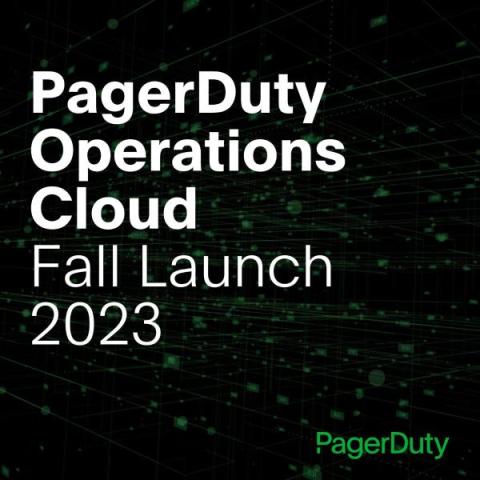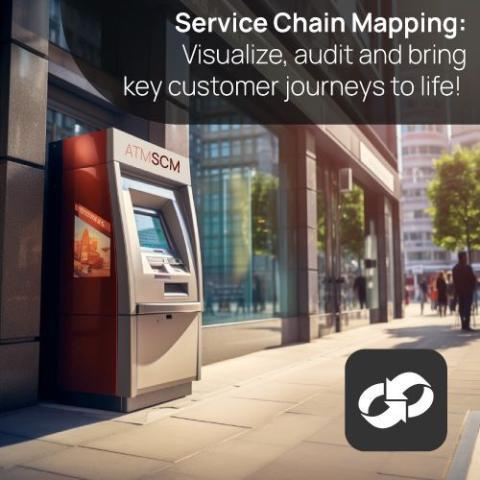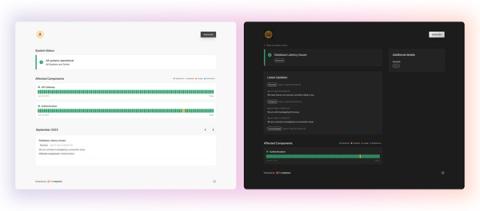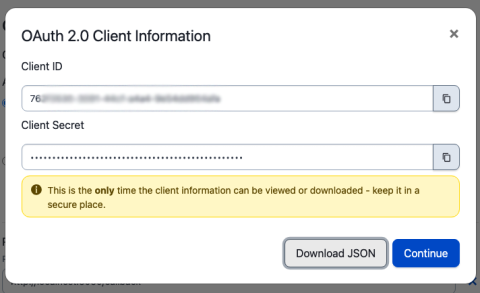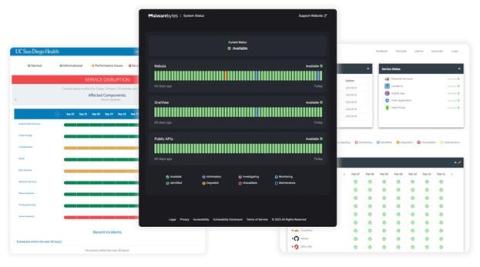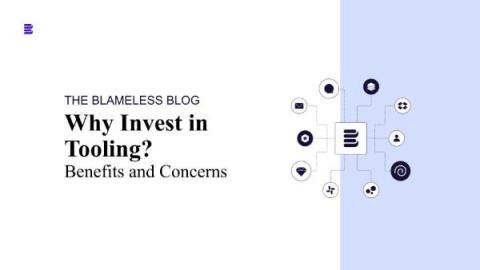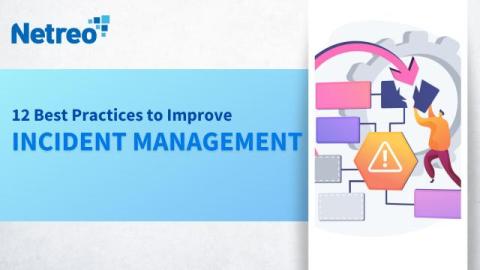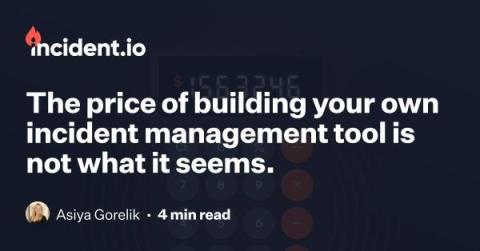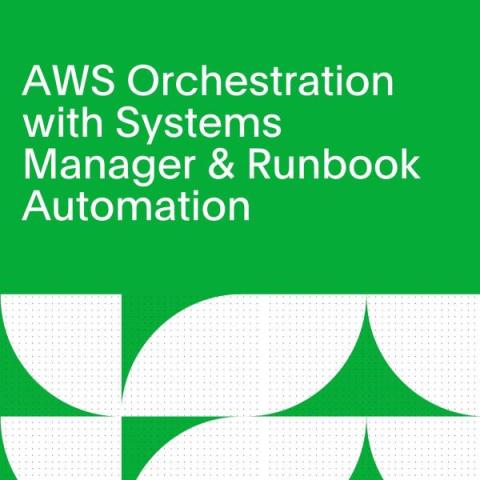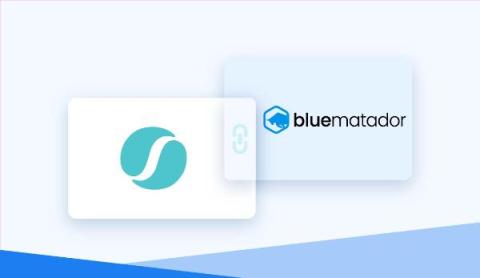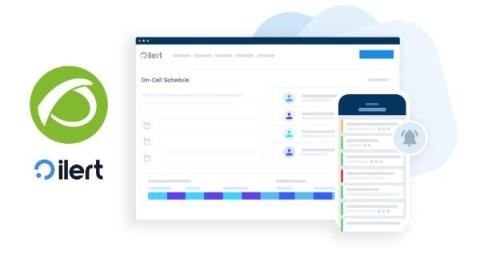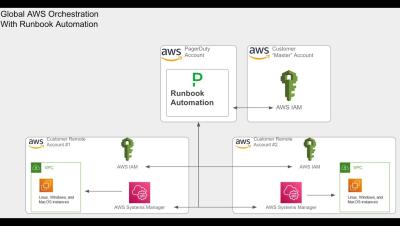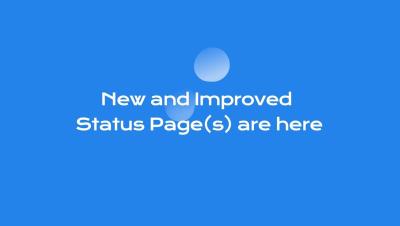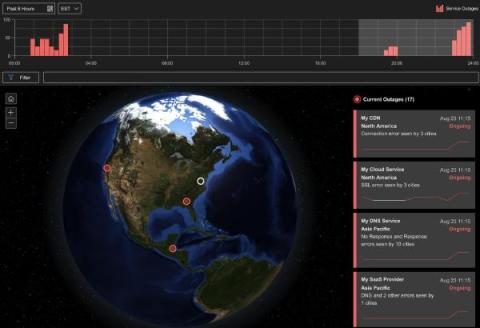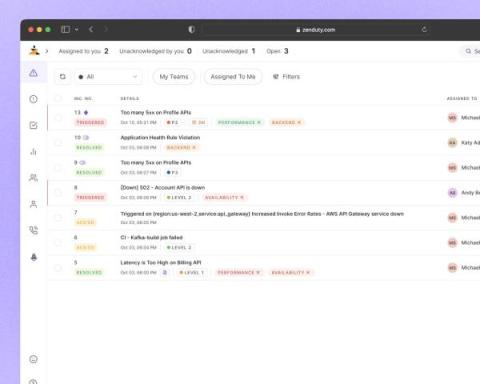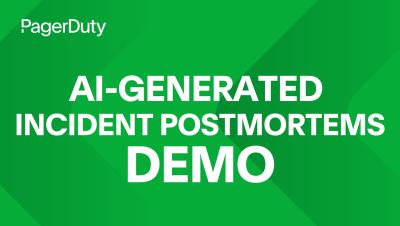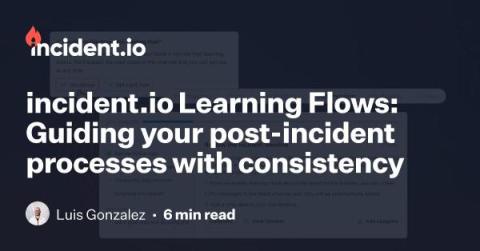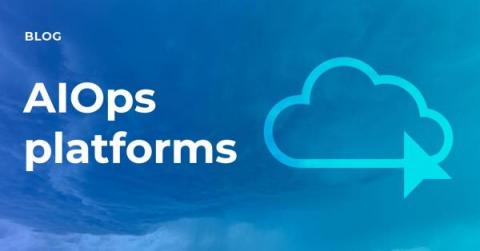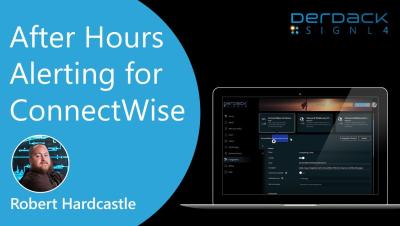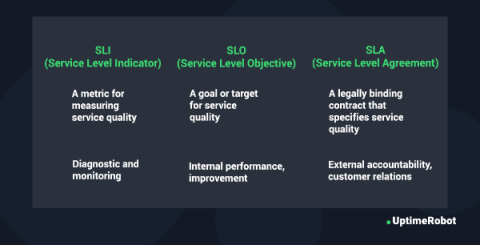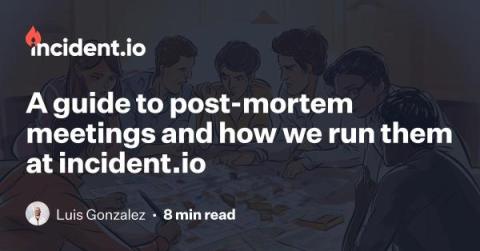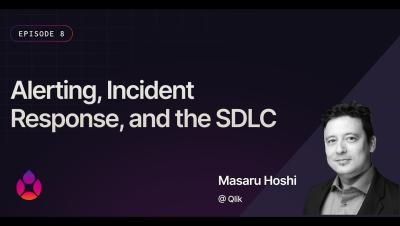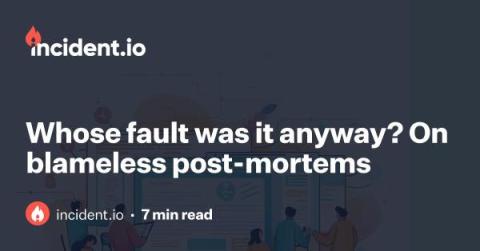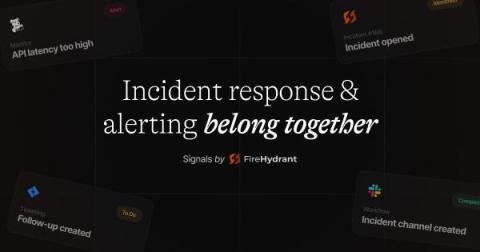Operations | Monitoring | ITSM | DevOps | Cloud
October 2023
The Unplanned Show, Episode 18: Resilient architectures with Matt Stine
PagerDuty Operations Cloud Fall Launch 2023
Across the business landscape, 2023 has been called the “year of efficiency.” Organizations have had to deliver more growth and innovation, but with tighter budgets and headcount than in prior years. CIOs have needed to build strategies to mitigate the risk of operational failure and protect their brand’s customer experience.
Interlink's Service Chain Mapping solution: Helping Banking & Finance Organizations Strengthen Operational Resilience and Meet Regulatory Requirements
Operational resilience is an increasing area of focus and scrutiny for regulators of the banking and financial services industry. In the European Union, the Digital Operational Resilience Act (DORA) looms on the near horizon - with equivalent regulatory frameworks slowly but surely rolling out across the globe.
Introducing Squadcast's Global Event Rulesets | Incident Management | Squadcast
StatusCast vs Status.io: Status Page Comparison
In the modern day IT landscape, service reliability is of the utmost importance. Status pages serve as crucial interfaces, communicating any interruptions or issues to stakeholders. While several options are available, two notable status page providers stand out: StatusCast and Status.Io. Here we take a dive into the various aspects of status pages and incident management for each status page service.
Create a dedicated Microsoft Teams channel for an existing alert
New Features In Team Onboarding
Tips To Never Miss An Incident Notification With Squadcast Escalations Policies
Opsgenie Alternatives: Finding the Right Fit for your Incident Management Teams
In the dynamic landscape of modern IT operations and Incident Management, choosing the right tool is paramount to ensuring the resilience of your organization. Opsgenie, a popular Incident Response and Alerting platform, has been a go-to choice for many. However, as businesses grow and requirements evolve, exploring Opsgenie alternatives becomes essential in the quest to find the perfect fit for your unique operational needs. In this blog, we'll embark on a journey to uncover and evaluate some compelling alternatives to Opsgenie, helping you navigate the vast sea of options and make an informed decision that aligns perfectly with your team's workflows and objectives.
Fresh from FireHydrant October 2023: Updates to status pages, views, and analytics
October might be a spooky month, but we’re doing our best to make incidents less scary. We released a number of updates this month that focus on two main areas: Let’s jump in.
What Should Your System Outage Notifications Say?
System outages: they are an inevitable problem that every single IT team will encounter at some point. Whether they come about due to technical issues, act-of-god natural disasters, or simply random human error, system outages happen to the best of us. Though the cause of system outages is not always in your control, you can control your team’s processes for response and resolution.
Webinar: Streamlining Incident Management With Automation and Contextual Awareness
MSP's As NOC's, Handling Multiple Clients
Understanding the ServiceNow CMDB - and how AIOps modernizes it
Navigating the complex world of ServiceNow’s Configuration Management Database (CMDB) can feel overwhelming. You might find yourself grappling with understanding the foundational aspects of the CMDB, or maybe you’re seeking effective ways to utilize and integrate it seamlessly into your IT processes. You want to extract the maximum value from your ServiceNow CMDB but need help figuring out how to start.
Build Sophisticated Apps for Your PagerDuty Environment Using OAuth 2.0 and API Scopes
Many PagerDuty customers create their own apps to help them manage their PagerDuty environments. Teams might have any number of workflows that might benefit from a custom application. A PagerDuty admin might want to be able to load CSV files with new users and their contact information into PagerDuty when new teams join the platform, or load new services before they are released to production.
Elevating Incident Management: Leveraging automation and AI to put reliability on autopilott
RapidSpike + Squadcast: Routing Alerts Made Easy
What is a Pull Request and Why You Need Them
As an engineer, you're probably familiar with version control systems like Git that let you track changes to your codebase. But are you using one of the most useful features of Git pull requests? If not, you're missing out. Pull requests are one of the best ways to collaborate on projects and create better code. In this article, we'll go over the pull request meaning, why you should be using them, and how to create your own pull requests.📑 What is incident management software?
What is a Status Page and Why Do You Need One?
The definitive guide to event correlation in AIOps: Processes, tools, examples, and checklist
Are you tired of sifting through a sea of IT events and alerts? Or perhaps you’ve found yourself overwhelmed by the volume of data flooding your monitoring systems and challenged to identify the incident root cause. There’s a better way to manage the chaos: using AIOps to unite disparate tools, data, and teams for event correlation.
The Unplanned Show, Episode 17: PagerDuty's Backstage Plug-in
PagerDuty for Customer Service Operations
Customers Choose PagerDuty for Real-Time Operations
Why Invest in Tooling? Benefits and Concerns
AIOps use cases: Technical, operational, and business examples
ITOps is at a crossroads: Teams struggle to manage a high volume of alerts and coordinate between different tools and teams. Teams also must balance cloud technologies’ agility and on-premise solutions’ stability. The sheer speed of today’s IT demands both flexibility and visibility in development and harmonized tech stacks.
Getting started on alerts with Escalation Policies
Escalation policies are essential for making sure that incidents are quickly addressed and resolved. They provide a systematic approach to automate alerts, guaranteeing that no incident goes unnoticed. Let’s get you started, shall we? An escalation policy is a way to automate alerts and assure that incidents are never missed. The first point of contact for an incident is through an alert that is sent according to the escalation policy.
Ready for DORA? Strengthen Operational Resilience with Service Chain Mapping by Interlink Software.
12 Best Practices to Improve Incident Management
Today’s fast-paced digital world can lead to system breakdown and disruptions that strain organizational resources. What truly distinguishes successful organizations is their response when problems occur. Incident management serves this function. At its core, incident management involves teams managing unexpected disruptions quickly with minimal impact to users or business operations. The process is like a safety net that prevents further problems from developing into trust issues.
The price of building your own incident management tool is not what it seems.
Build or buy? An age-old decision that gets made dozens of times a year. It’s quite possibly one of the most important decisions you make as an company. It impacts roadmaps, productivity, team structure, and customer satisfaction (you know, just a few little things). There are a lot of factors to consider, one of the most prominent being cost. So, what exactly are the costs you need to consider when building your own incident management solution?
Create an alert template
Coconala Uses PagerDuty to Reduce MTTA
Zenduty - The What, Why and Where We're Going
Building a culture of Incident response
Building a culture of incident response is not just about solving problems; it is about creating stronger teams, empowering individuals, and fostering a more resilient and thriving workplace. How do you achieve this culture and improve your incident management processes? Let’s dive in;
How does SIGNL4 provide for truly reliable alerting?
Of course, one expects an alerting solution to be reliable. This is important because a missed alert can have a significant impact on the business. It is about IT uptime, disruptions in production or other critical system conditions. Business processes, production workflows and therefore money, the reputation of the company or even the health of the employees are at stake. But what does reliable alerting actually mean and how is it achieved?
AWS Orchestration with Systems Manager & Runbook Automation
It is now the de facto standard for companies to operate across numerous regions and cloud-accounts. The reasons for this vary, and depending on where you sit in the organization, these reasons may be more or less apparent to you.
Blue Matador + Squadcast: Alert Routing Simplified
NOC Success Like Never Before: Automation Strategies for All-new Incident Management
Network Operations might never be the same. But then again, why would anyone want it to be? The power of automation and orchestration can bring incredible value to the Network Operations Center (NOC), including the business-critical call to get proactive and ahead of the incidence response and management game. It’s more than a towering volume of events – it’s the complexities involved, too.
Alerting with ilert and Pandora FMS
This post introduces the Pandora FMS monitoring solution and how to integrate it with ilert to establish reliable alerting. The guest post is written by Sancho Lerena, the CEO of Pandora FMS.
Global AWS Orchestration with Runbook Automation
Squadcast Unveils Enhanced Status Pages
Status Page Demo: Build your OneUptime Status Page in under 10 minutes.
Dell Technologies acquires Moogsoft
Dear Current and Future Moogsoft Customers, I am happy to announce that Dell Technologies has acquired Moogsoft on September 17, 2023. This is good news for existing and future Moogsoft and Dell customers. Earlier this year Moogsoft embarked upon raising capital to accelerate growth.
4 Ways to Reduce Your Mean Time to Resolution
Panel Discussion: Modern Monitoring and Observability
Terraform Time - Leveraging PagerDuty Service Standards for better Terraform configuration
Introducing Past Incident Feature | Incident Context and History | Squadcast
Internet Sonar: A Game-Changer for Incident Detection
When outages cost you tens of thousands of dollars each minute, pinpointing the source of disruptions as quickly as possible becomes mission-critical. This is not a time for finger-pointing and hastily assembled war rooms searching for that needle in the haystack. You need simple, intelligent, trustworthy Internet health information to expedite your incident detection.
Speed, Scale, and Special Sauce: The Evolution of the PagerDuty Brand
At PagerDuty, our purpose is to empower teams with the time and efficiency to build the future. That means that our own teams are constantly building and relentlessly innovating to help organizations drive transformative change in the way they operate.
Everything you need to know about IT Operations Analytics
Data is both a challenge and an asset for IT professionals, who rely on IT Operations Analytics (ITOA) to guide them towards operational excellence, system reliability, and swift incident resolution. So whether you’re seeking clarity on understanding what ITOA is and its connection to related technologies, are contemplating how to use it within your organization, or are curious about its enhanced efficiency and cost savings benefits, we’ve got you covered.
Behold a brand New Incident Dashboard!
The incidents page, the most visited page on Zenduty, has an all-new look and feel! It's been completely redesigned from the ground up to be faster, easier to use, and more visually appealing. The Incidents list now dedicates more space for important information, such as the title, date, priority, and more. The UI is also more polished, shaving off whitespace where unnecessary. The avatars have been redesigned with more pastel shades, resulting in an overall design far more soothing to the eye.
AI-Generated Status Updates
AI-Generated Incident Postmortems
Process Automation 101
Do you need better cloud observability - or AI-powered cloud visibility?
Maybe you’re still using monolithic applications, built and refined over many years. You understand that shifting to microservices or containerized architectures is a huge and daunting task. You’re probably grappling with the limitations of legacy systems—maybe they’re slow, tough to update, or can’t scale as you’d like. And you’re likely using more traditional IT monitoring tools or even some cloud observability tools.
Kubernetes Incident Management: A Practical Guide
As more organizations embrace containerized applications, Kubernetes has emerged as the leading platform for orchestrating these containers. However, its complexity, combined with the inevitable reality of IT incidents, demands a well-defined strategy for managing disruptions. This article introduces Kubernetes incident management, describes common Kubernetes errors, and provides practical guidance to efficiently handle incidents.
AI-Generated Runbooks
Avoiding a Major Incident with PagerDuty AIOps
Learning Flows: Bringing consistency to your post incident processes
What is Prometheus Alertmanager?
Prometheus Alertmanager is a powerful tool designed to handle various alerts generated by Prometheus. It plays a vital role in the overall monitoring ecosystem, acting as a centralized hub for managing alert notifications. With Prometheus Alertmanager and its robust notification management capabilities, you can efficiently define alert routing and notification policies. This empowers you to take timely actions and mitigate potential issues before they impact your service availability.
Create a dedicated Slack channel for an existing alert
After Hours Alerting for ConnectWise: Using SIGNL4 to Route CW Tickets to On-Call Engineers
As a business owner or manager, you understand the importance of efficient operations and effective communication, particularly after hours. You want to equip your on-call engineers with all the information they need to resolve a ticket when not at their desk. If you are using ConnectWise to manage your service tickets – here is some great addition to help with your after hours alerting.
Blameless Unveils New Terraform Provider to Elevate Workflow Management at Scale
G2 Fall Report Positions Squadcast among the leading Incident Management, and IT Alerting Tools
What are AIOps platforms?
IT operations teams are challenged to keep pace with the rapid speed of digital transformation. As companies use more cloud-based apps, increase agile deployments, and develop new microservices-based applications, they add layers and complexity to their technology stacks, making life increasingly challenging for ITOps performance.
A Detailed Guide to Setting Up Effective On-Call Rotations
The Debrief: Build vs buy
After Hours Alerting for ConnectWise
SLA vs. SLO vs. SLI: What's the Difference?
When it comes to managing services effectively, terms like SLA, SLO, and SLI are often thrown around like confetti at a parade. They’re in meetings, in documents, and even in casual office conversations. But if you’re new to the field or simply haven’t had the chance to dig into these acronyms, they can feel like a bewildering alphabet soup. And they can’t be missing on an uptime monitoring blog such as ours! So, what do these terms really mean?
A guide to post-mortem meetings and how we run them at incident.io
You've just made it through a particularly tough incident. It was a short outage affecting a subset of customers, so not exactly the end of the world, but bad enough that it involved multiple people across a number of teams to resolve. Either way, the incident was well managed, and the dust has settled. Now what? Most guidance would say that putting together a post-mortem document is a good idea, given the severity of the incident. You've also done this, so what's next?
Introduction to ilert AI
Three Ways to Better Appreciate your SREs and DevOps Engineers
The Unplanned Show, Episode 16: Resiliency with Sam Newman
How AIOps modernizes CMDBs to drive accuracy and value
Maintaining your Configuration Management Database’s (CMDB) accuracy, keeping it fully updated, and improving its performance is a frustrating and elusive goal for ITOps and IT leaders. Aiming for this ‘golden’ CMDB standard can feel like running on a treadmill where you’re putting in a lot of work, but remain as distant as ever from your goal. Can IT leaders ever catch up?
Bridging the ITIL vs DevOps Mindset: CI/CD Best Practices for ITIL Organizations
DevOps practices in software development have revolutionized the way updates are released. However, many companies entrenched in ITIL practices find it challenging to seamlessly integrate with the DevOps practice of Continuous Integration and Continuous Delivery/Deployment (CI/CD). This is because ITIL focuses on stability, which suits older systems, while DevOps is ideal for modern setups with its agile, automated practices.
Revolutionizing your Grafana setup with intelligent alerting
Once upon a time, in the bustling city of DataVille, lived a team of dedicated IT professionals tirelessly working to maintain the city’s digital heartbeat. Their mission was to ensure the smooth operation of their city’s digital infrastructure, which was not limited to the daytime operations but extended beyond business hours. They were the unsung heroes, the guardians of the city’s data. Their tool of choice? Grafana, a powerful open-source platform for observability.
What is HCAHPS: A Comprehensive Overview
In the realm of hospitals and healthcare organizations, the term “HCAHPS survey” is a recurrent presence: Hospital Administrator A: “The latest HCAHPS survey results just came out, and patients seem satisfied with…” Hospital Administrator B: “Some of our past patients participated in the HCAHPS survey, but they expressed disappointment with…” You might be left wondering, “What exactly is the HCAHPS survey?” Allow me to elucidate.
Unified Incident Management: Merits of Combined On-Call and Incident Response | Squadcast
Choosing the Right Career Path in Tech: Software Engineering vs. Site Reliability Engineering (SRE)
The tech industry is booming, and there are many different career paths. But, two of the most popular and in-demand roles are Software Engineering and Site Reliability Engineering (SRE). Site Reliability Engineering (SRE) blends elements of software engineering with IT operations, focusing on reliability. On the other hand, SWE Software Engineering involves designing, developing, testing, and deploying software applications.
Alerting, Incident Management and the SDLC | Better Incidents Podcast Ep. 8
October 2023 Update - New layout, additional cross links, improved event filtering and much more
Our October update brings a new layout in the web portal, new additional cross-references from Signl details to linked entities, and improved grouping options for conditions in the distribution rules. As always, all the details are in this blog article.
What is Mean Time Between Failures - and why does it matter for service availability
Mean Time Between Failures (MTBF) measures the average duration between repairable failures of a system or product. MTBF helps us anticipate how likely a system, application or service will fail within a specific period or how often a particular type of failure may occur. In short, MTBF is a vital incident metric that indicates product or service availability (i.e. uptime) and reliability.
Enhance Your Customer Service with PagerDuty for ServiceNow CSM
In today’s fast-paced, digital-first landscape, delivering exceptional customer experience is paramount to business success. For customer service teams, that means maintaining service level agreements (SLAs) and ensuring swift responses to customer issues that can make or break your company’s reputation. Fortunately, PagerDuty has improved the way companies handle customer service teams and has built applications into ServiceNow’s CSM platform.
The Rise of Generative AI
Global Event Rulesets: Streamlining Alert Routing Across Services
The Link Between Early Detection and Internet Resilience: A Lesson from Salesforce's Outage
Almost every study examining the hourly cost of outages invariably leads to a clear and undeniable conclusion: outages are expensive. According to a 2016 study, the average cost of downtime was estimated at approximately $9,000 per minute. In a more recent study, 61% of respondents stated that outages cost them at least $100,000, with 32% indicating costs of at least $500,000 and 21% reporting expenses of at least $1 million per hour of downtime.
Whose fault was it anyway? On blameless post-mortems
No one wants to be on the receiving end of the blame game—especially in the wake of a major incident. Sure, you know you were the one who made the final change that caused the incident. And hopefully, it was a small one that didn’t cause any SEV-1s. Still, the weight of knowing you caused something bad should be enough, right? Unfortunately, sometimes fingers get pointed, your name gets called, and suddenly, everyone knows that you’re the person who created more work for everyone.
Choosing the Right Metrics for Noiseless K8s Alerting
Blameless Introduces The First Generative AI-powered, Automated Incident Communications With Comms Assistant
What Is the Role of an Incident Commander?
For most businesses, managing major incidents can be intimidating. With a swarm of information coming from different directions, keeping things organized and maintaining clear, effective communication is tough. It only gets worse when there's no defined process to follow. This disorganization confuses everyone, delays responses, and increases the incident escalation rate. Enter the incident commander (IC).
Incident response and awareness acceleration: What we can learn from responders of Queenstown floods.
I was visiting Queenstown, New Zealand last week amidst the horrible floods which quickly escalated. As an incident responder myself, I was amazed at the operations and how fast responders on the ground acted in evacuating and clearing the grounds. Over 100 people were evacuated in the middle of the night with zero casualties. A commendable job. Here are some observations I made and what we can learn as incident responders ourselves..
A Journey through the Blameless Resource Library
The Unplanned Show, Episode 15: PagerDuty APIs with Nakul Bhagat
Terraform Time: Testing out OpenTofu alpha release with Rundeck Terraform provider
Working Effectively With Executives During an Incident
You’re in the incident channel rocking yet another incident. Comms are flowing, resolution is in sight, the team is grinding, and you’re feeling good. Then…
The new principles of incident alerting: it's time to evolve
In the ever-evolving world of software engineering, the landscape is constantly shifting. New technologies emerge, best practices evolve, and how we build and run software continues to change. However, when it comes to incident alerting, it often feels like we're stuck in the past.
The Debrief: The connection between incident management and problem management
What is incident management?
Why incident.io will play a pivotal role in the growth of WorkOS
Incident management vs problem management
Alon Levi, VP of Engineering at WorkOS, on his favorite incident.io features
Generative AI for IT Operations: Your Questions Answered
IT leaders are thrilled about the potential of Generative AI for IT Operations. But they also want to know how it works, why it works, and what it will do for them before taking the leap and adopting this new technology. Allow me to share my perspective on the hype and the truth behind Generative AI. I’m the Field CTO for BigPanda, Operational Intelligence and Automation driven by AIOps.




